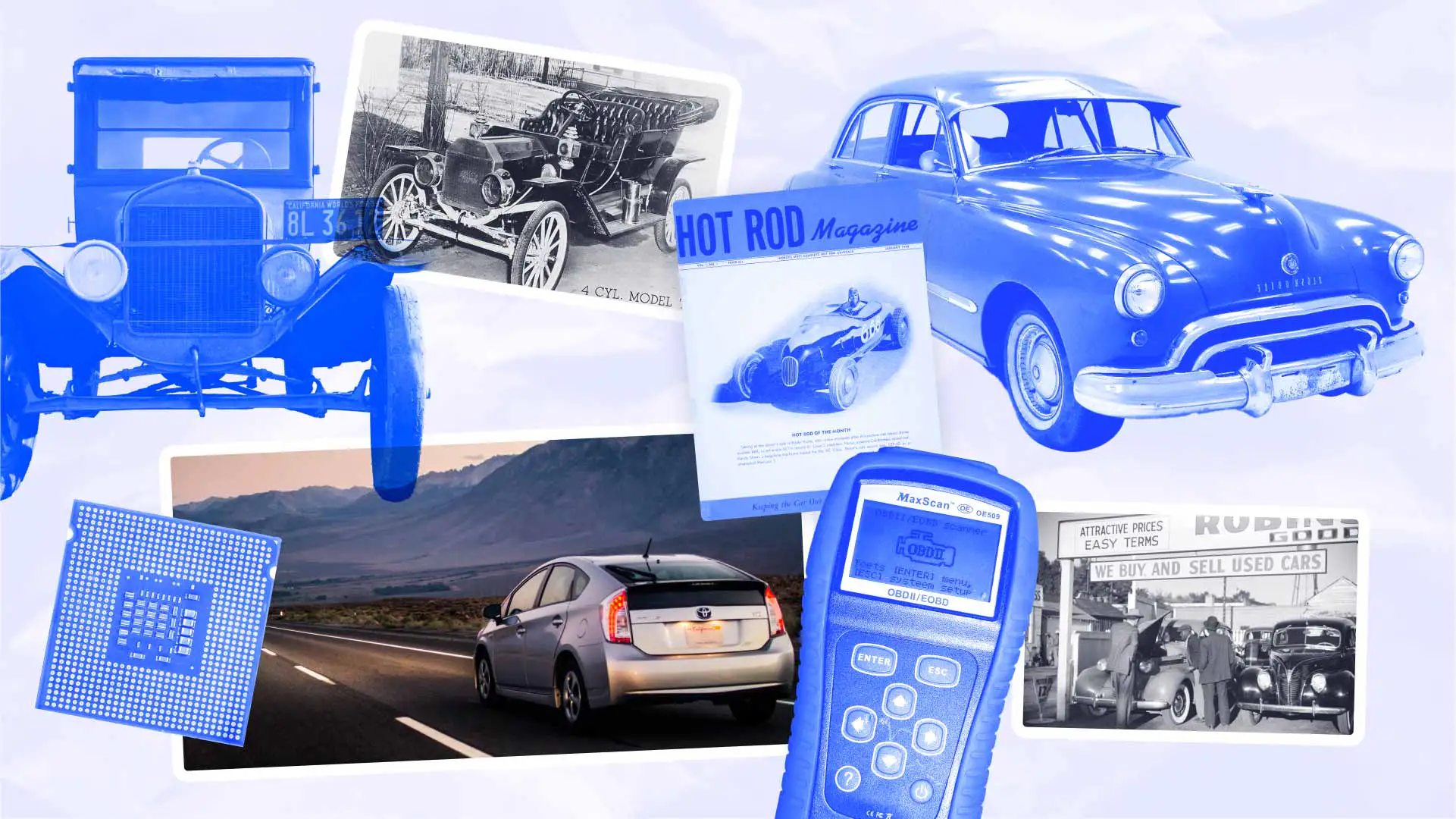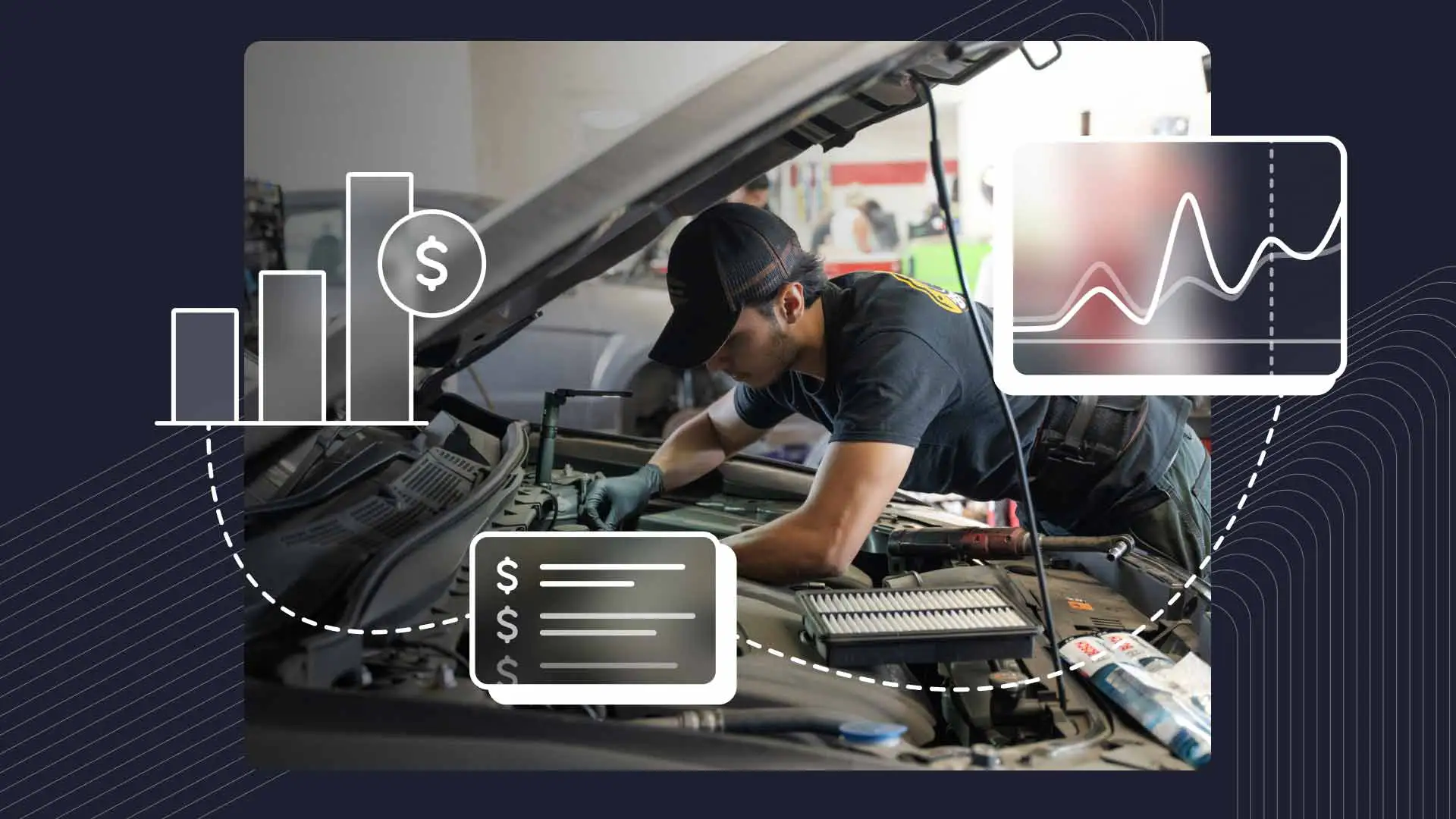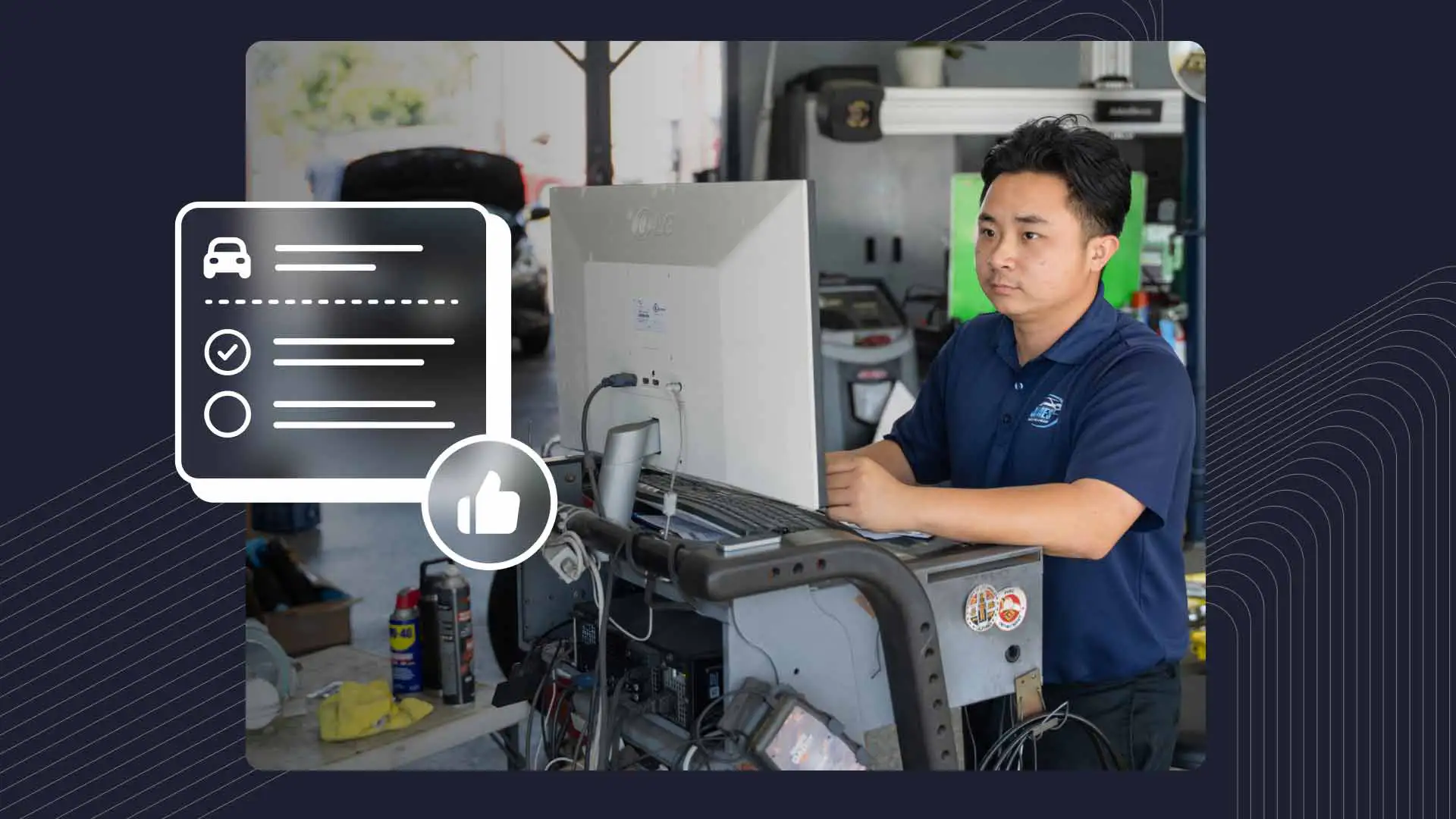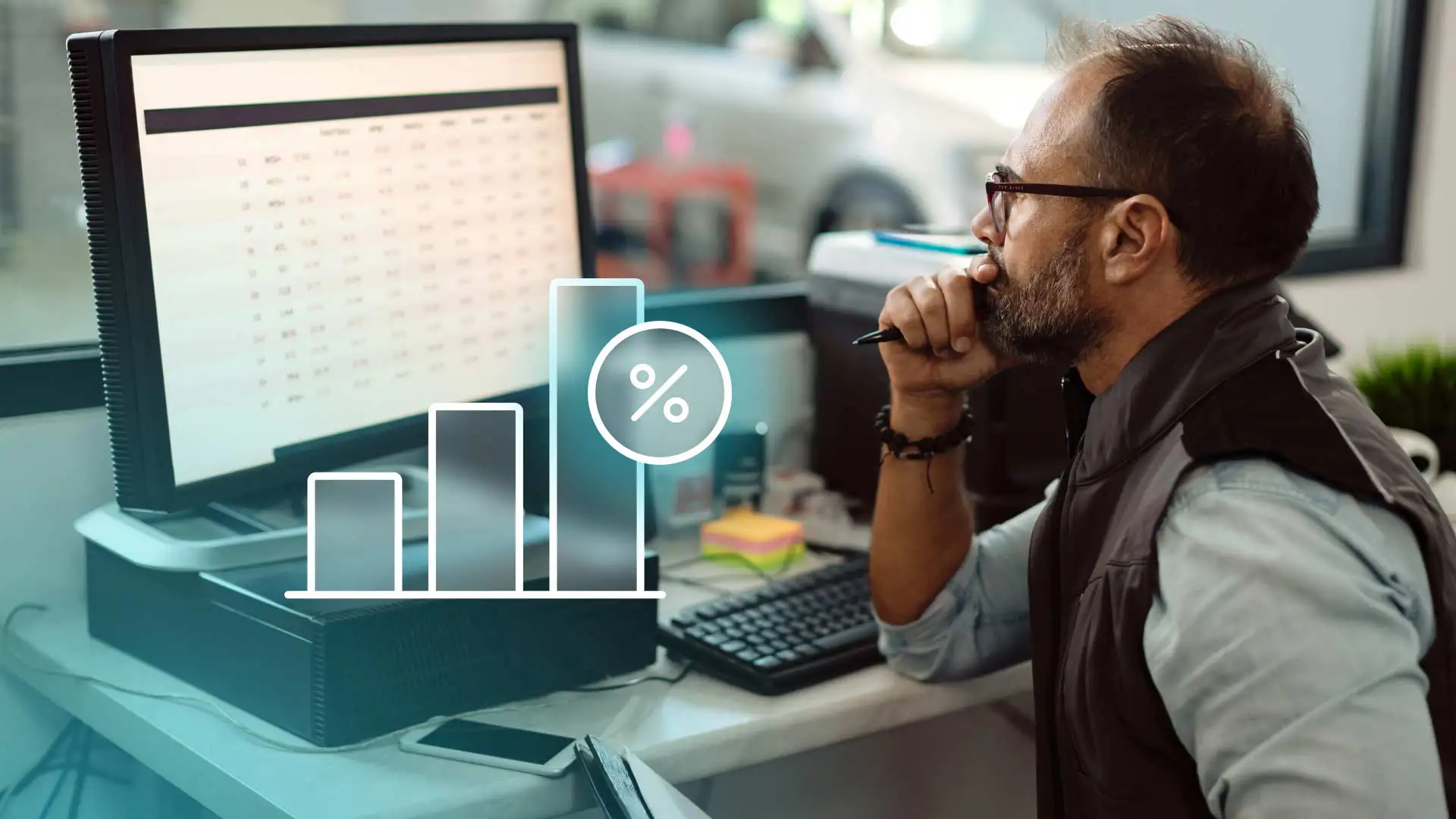Embarking on a voyage through the annals of automotive history, we find ourselves on a captivating road trip through the evolution of automotive repair and innovation. The story unfolds across decades, a testament to the relentless pursuit of excellence and progress that has propelled the automotive industry forward. From the clattering garages of the early 20th century to the modern, connected automotive ecosystem of the 21st century, each era in this journey reflects a dedication to keeping vehicles on the road while pushing the boundaries of what's possible.
1900–1920: Navigating the Early Roads of Repair
In 1908, the automotive landscape shifted dramatically with the introduction of Ford's Model-T. While not the first car, its standardized parts streamlined production, making automobiles more affordable. As cars became more common, the need for frequent maintenance birthed auto repair shops in 1914.
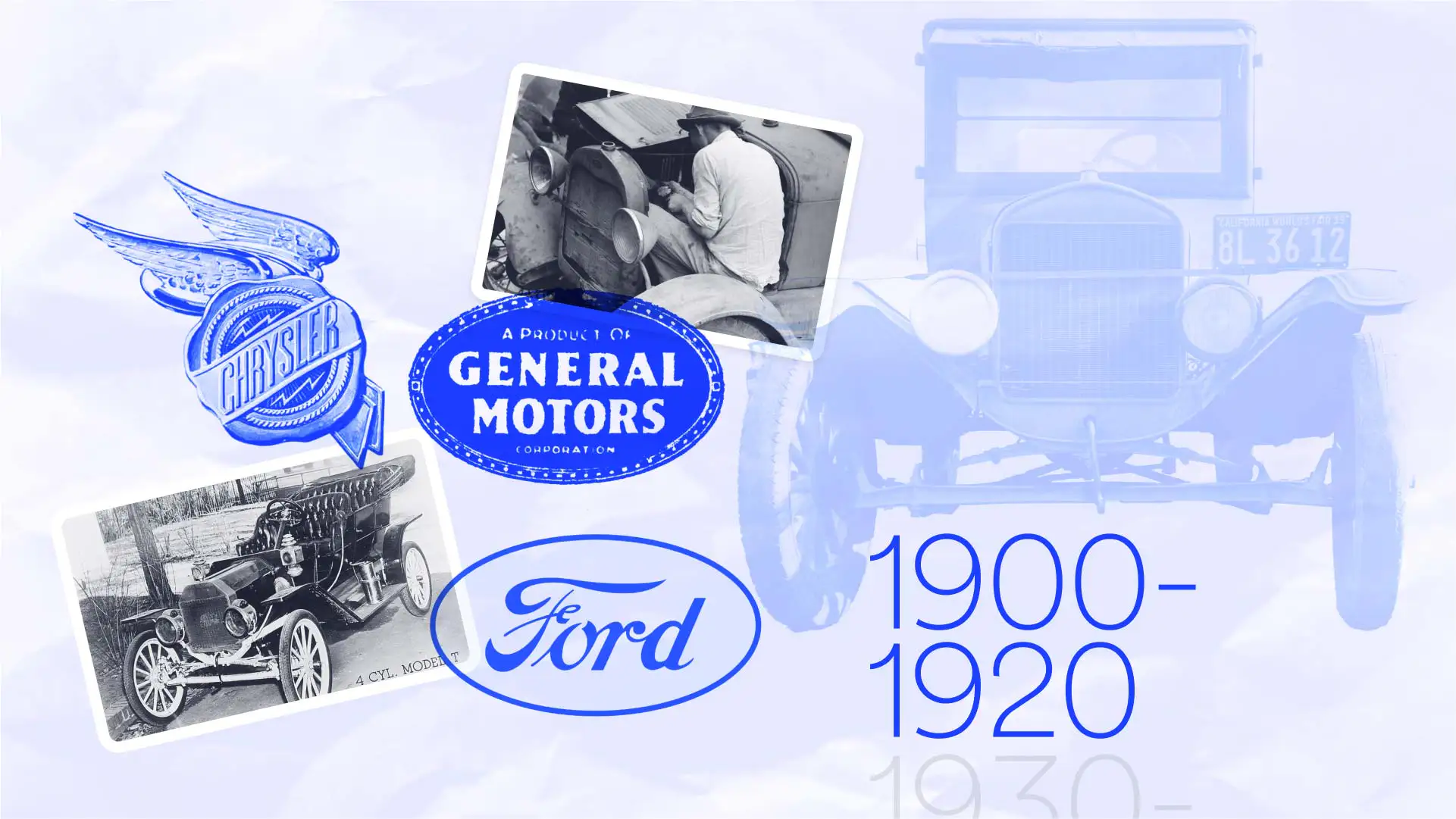
In the early days of cars, frequent maintenance and repairs were necessary. Auto repair shops were started by machinists, blacksmiths, bicycle mechanics, and others. New car dealers, gasoline stations, and garages in most cities also offered repairs and services. Cars were more reliable, but repairs were still needed, leading to over 60,000 service shops by the 1920s.
Throughout the 1920s, General Motors, The Ford Motor Company, and Chrysler ramped up production and auto accessibility. All based out of Detroit, these auto giants established a model for mass-production technology, national advertising, and product appeal. GM offered customers credit lines, affordable luxury, and a range of automobiles for every taste and income level.
Meanwhile, Ford's assembly line techniques, pioneered by Henry Ford, streamlined production processes, making automobiles more affordable and accessible to the average consumer. Chrysler, led by Walter P. Chrysler, focused on engineering advancements and stylish designs, further contributing to the newly competitive auto industry.
1930–1970: The Aftermarket Industry Emerges as Cars Continue to Evolve
The post-war era, following World War II, brought about a surge in the used car market. Returning soldiers with mechanical skills found a thriving hot rod hobby centered in California. The booming economy provided enthusiasts with the means to spend on cars and parts, while a surplus of war supplies offered ample materials for hot rodding. The hot rod culture, characterized by customizing and modifying cars for performance and aesthetics, gained popularity, with enthusiasts showcasing their creativity in creating unique and personalized vehicles. All of this impacted how auto shops had to grow and serve the general population as cars became more common and more custom.

The year 1948 marked a significant turn with the introduction of the first true automatic transmission in the Oldsmobile, increasing the number of drivers on the road but also adding complexity to repairs. The automatic transmission, commonly known as the Hydra-Matic, was a groundbreaking innovation that eliminated the need for manual shifting, making driving more accessible and convenient for more people, removing the barrier of manual gear shifting, and allowing individuals with varying levels of driving skill to operate vehicles more easily.
While the automatic transmission brought about convenience, it also introduced a new level of complexity to the auto repair field. Unlike manual transmissions, which were simpler in design and mechanics, automatic transmissions involved intricate systems of hydraulic components, torque converters, and planetary gears. The complexity of these systems meant that repairs and maintenance required a higher level of expertise, often requiring specialized knowledge and tools.
In 1967, Bosch's electronic fuel injection system revolutionized automotive maintenance, once again changing the landscape of diagnostics and service across various brands. Traditional carburetors often struggled to deliver precise air-fuel mixtures, leading to issues like inefficient combustion, reduced fuel efficiency, and increased emissions. Bosch's EFI system, with its ability to precisely control the fuel injection process based on real-time sensor data, significantly improved combustion efficiency. This precision resulted in better fuel economy, reduced emissions, and improved overall engine performance.
1990–2020: New Technology and Market Shifts
Now we enter the era of technology with the OBDII (On-Board Diagnostics) mandate in 1994. OBDII was a major leap forward in vehicle diagnostics and a crucial step toward standardizing the tools used for identifying and addressing issues within a vehicle.
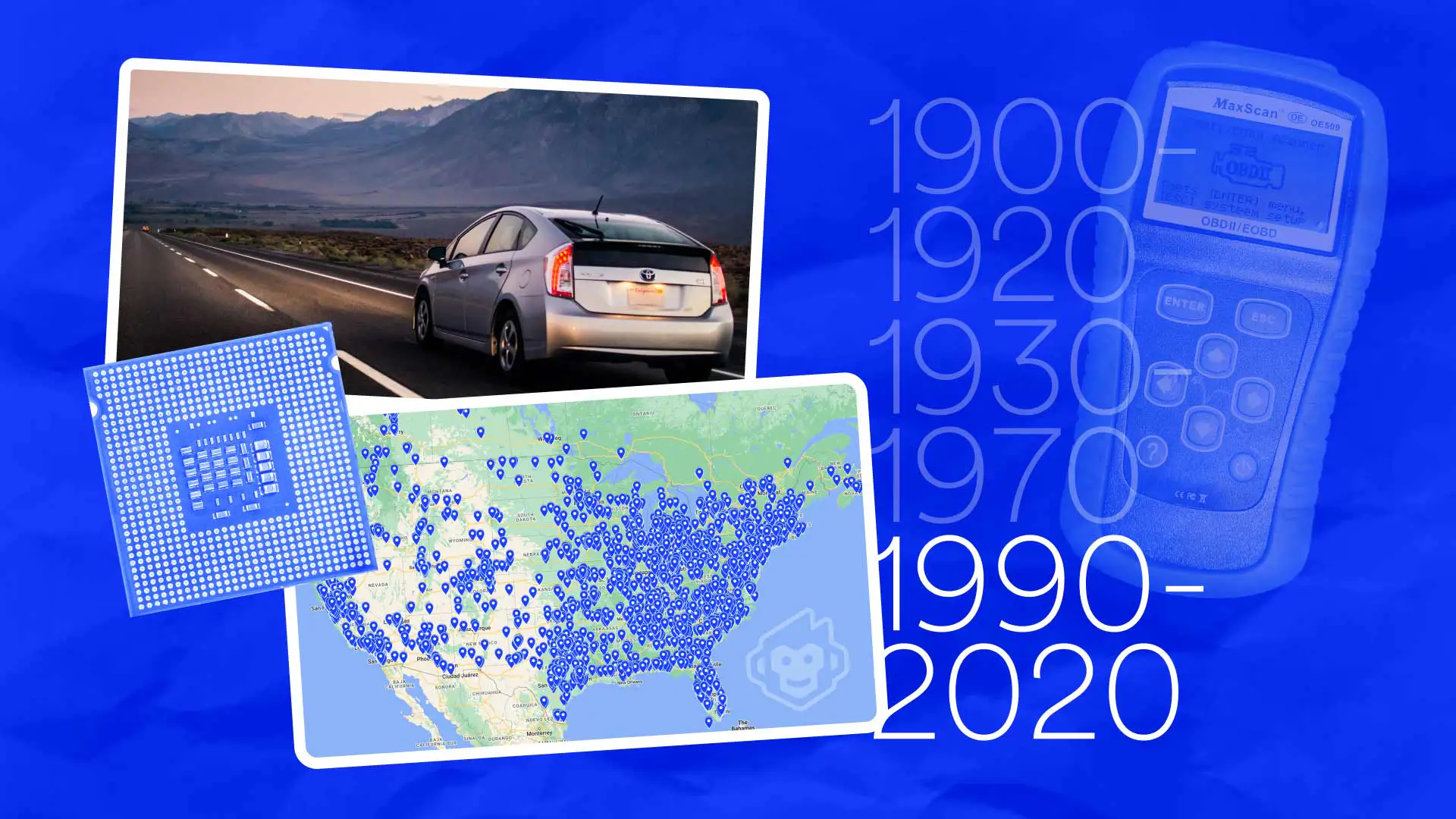
OBDII was mandated by the California Air Resources Board (CARB) in 1994, initially for all cars sold in the state. It became a nationwide standard for all vehicles sold in the United States. The primary purpose of OBDII was to provide a standardized system for monitoring the performance of a vehicle's engine and emissions systems.
One of the major features of OBDII was its ability to generate Diagnostic Trouble Codes (DTC). These codes are a valuable diagnostic tool for technicians, allowing them to quickly identify the root cause of a problem and take appropriate corrective action.
By standardizing the tools and codes used for diagnostics, OBDII significantly enhanced technician efficiency. It eliminated much of the guesswork that was previously involved in diagnosing vehicle issues, streamlining the process, and enabling quicker, more accurate repairs. Technicians could connect diagnostic tools to the OBDII port in a vehicle, retrieve the relevant trouble codes, and access real-time data about the vehicle's performance, as they still can today.
Fast forward to 1997, and Japan revolutionized the automotive landscape with the release of the Toyota Prius, marking the mainstream acceptance of electric vehicles (EVs). The Prius was the world's first mass-produced hybrid electric vehicle and showcased the potential of hybrid technology.
The Toyota Prius was designed to address growing concerns about environmental sustainability and fuel efficiency. It featured a hybrid powertrain, combining an internal combustion engine with an electric motor, allowing the vehicle to operate on both gasoline and electric power. This design aimed to reduce fuel consumption, lower emissions, and provide drivers with a more environmentally friendly transportation option.
One of the Prius's key advancements was its use of regenerative braking technology, which captured and stored energy during braking and then used that energy to assist in powering the vehicle. This regenerative braking system improved fuel efficiency and showed the potential for harnessing energy that would otherwise be lost during braking.
The next major milestone happened in 2019. Supply chain uncertainties, a microchip shortage, and a budding pandemic caused many issues for the car market as a whole. These disruptions triggered a cascade of effects, leading to a surge in demand for used cars and pushing the used car repair market to new heights.
The microchip shortage, stemming from geopolitical tensions and disruptions in semiconductor manufacturing, had a domino effect on the production of new vehicles. Car manufacturers, unable to secure an adequate supply of essential microchips, faced production delays and limitations. As a result, the availability of new cars on the market dwindled, creating a supply-demand gap and causing a spike in new vehicle prices.
With the diminished inventory and increased prices of new cars, consumers began seeking alternatives, and many turned to the used car market.
2023: A Connected Ecosystem
Fasten your seatbelt as we zoom into the present day. Today, many automotive repair shops have evolved into a connected ecosystem, seamlessly interacting with part suppliers, vendors, and car owners. Today's consumers have grown accustomed to the modern conveniences of living in a digitally connected world, and they expect auto shops to follow suit. Modern repair shops that embrace new technology not only meet but exceed these growing customers' expectations, paving the way for unprecedented business growth.
As we conclude this exhilarating journey through time, the road of automotive repair reveals itself as a dynamic and ever-changing landscape. From the simplicity of a Model-T to the intricacies of modern EVs, the essence of automotive care remains rooted in a commitment to keeping vehicles on the road. The connected ecosystem of 2023 serves as a testament to the resilience and adaptability of repair shops, ensuring they not only survive but thrive in an era where customer expectations steer the course of success.
